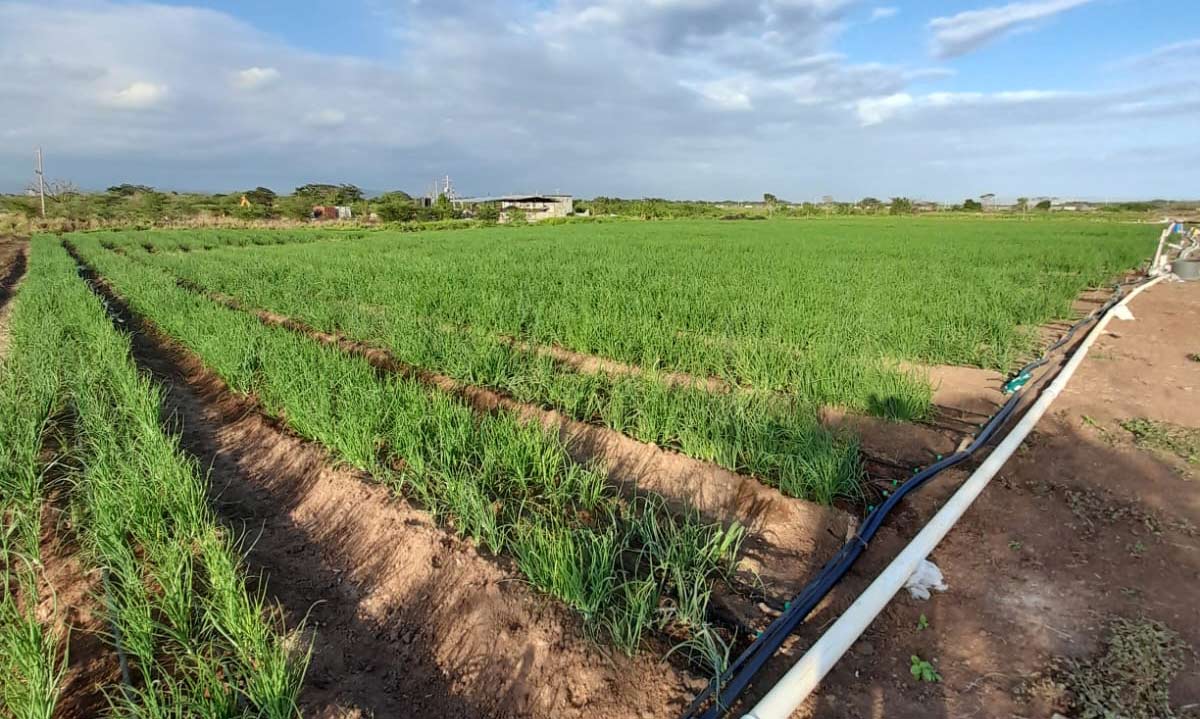Growing Onions in Jamaica
It’s Time for Onion Production: A Farmer’s Guide to Growing Jamaica’s Culinary Staple
Onion (Allium Cepa) is more than just an essential ingredient in the Jamaican kitchen—it’s a key crop under the Ministry of Agriculture, Fisheries and Mining’s Production Incentive Programme. This initiative is designed to boost local production, improve the quality and consistency of onions on the market, and reduce the country’s reliance on imports. As a new farmer, there are important factors to consider before embarking on onion production this season. Let’s explore some key tips that will help you get the most out of your onion crop.
Timing Your Planting: The Onion Growing Seasons
Onions are typically planted during two main seasons in Jamaica:
Fall Season: October to February
Spring Season: February to April
With the Fall Season fast approaching, now is the time to prepare for a successful planting season.
Best Practices for Onion Production
1. Selecting the Right Site
The foundation of successful onion farming starts with site selection. Onions require full sunlight and are best grown on medium-textured or refined land. Flat fields that allow for good air circulation are ideal. Additionally, conducting a thorough soil and water analysis where possible is crucial to ensure that the growing conditions are optimal.
2. Preparing the Land
Proper land preparation is essential for a healthy onion crop. This includes land clearing, ploughing, ripping, and bed shaping. These steps are vital in eliminating weeds, creating a clean space for planting, and preparing the soil to nurture your onions. Constructing adequate drainage is also necessary to prevent waterlogging in the fields, which can damage the crop. Allow sufficient time between preparing the land and planting to ensure the soil is properly weathered and settled. For added efficiency, consider implementing “stale bed” technology, which prepares the land in advance to minimize weed growth.
3. Planting Your Onion Crop
There are two common methods for planting onions—direct seeding and transplanting.
Direct Seeding: Seeds can be sown at a rate of 3.5 to 4.5 kg per hectare (or 3-4 lbs per acre), with rows spaced 8-12 inches apart. Seeds should be planted about ½ inch deep, with spacing between seeds adjusted based on the growth stage of the crop.
Transplanting: If you choose to transplant onions, you'll need about 1-2 lbs of seeds for planting.
For mechanical planting, ensure that the machinery is properly calibrated for depth, spacing, and seed discharge. Precision is critical for ensuring uniform plant growth and maximizing yields.
4. Irrigation: Meeting Water Needs
Onions require consistent irrigation for optimal growth. The crop typically needs about 500,000 gallons of water per crop cycle, which equates to 110 days. It is especially important to avoid moisture stress during key growth stages, such as germination and bulbing. Water quality also plays a role in the success of your crop—be sure to avoid using saline water, as it can harm the plants.
5. Ensuring Proper Nutrition
Providing the right nutrients is key to producing a high-quality onion crop. Essential nutrients include nitrogen, phosphorus, potassium, sulphur, manganese, copper, and molybdenum. These elements contribute to the overall growth, development, and productivity of your onions. A well-balanced fertilization plan tailored to the needs of the crop will help you achieve higher yields.
6. Understanding Your Yield Potential
Under optimal conditions—including proper irrigation, good crop management practices, and the use of suitable onion varieties—you can expect a minimum yield of 37 tonnes per hectare (or 15 tonnes per acre). Maximizing yield depends on careful attention to each stage of the onion production process.
Technical Support: Contact Your RADA Agricultural Extension Officer
New farmers are encouraged to register with the Rural Agricultural Development Authority (RADA) at the Parish Office closest to their farm. Your local RADA Agricultural Extension Officer is a valuable resource who can offer technical advice, guide you through best practices, and support your efforts to improve production and productivity.
Onion production is an exciting opportunity for new farmers entering the field of production, offering the potential to contribute to national food security and benefit from the Ministry’s Production Incentive Programme. By following these key tips and working closely with RADA, you’ll be well-equipped to cultivate a successful onion crop this season.

